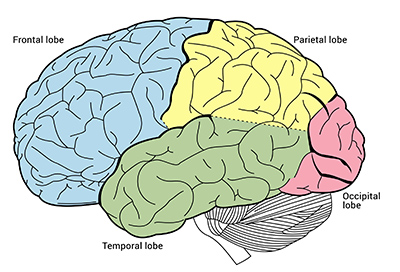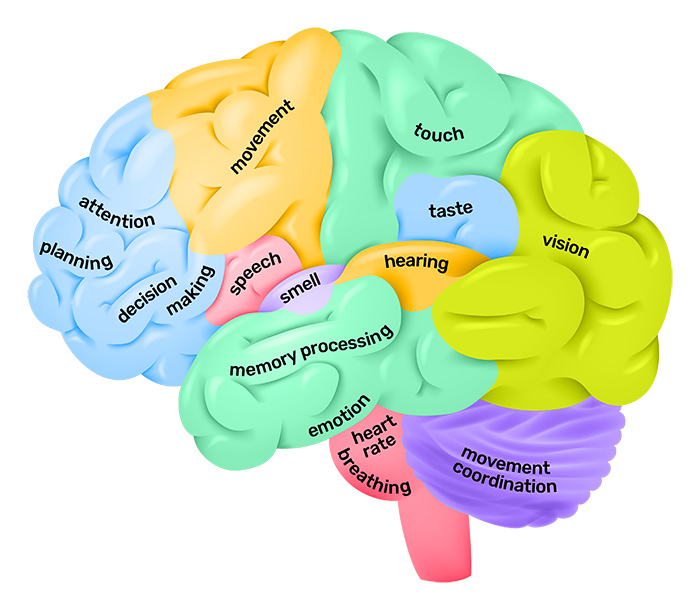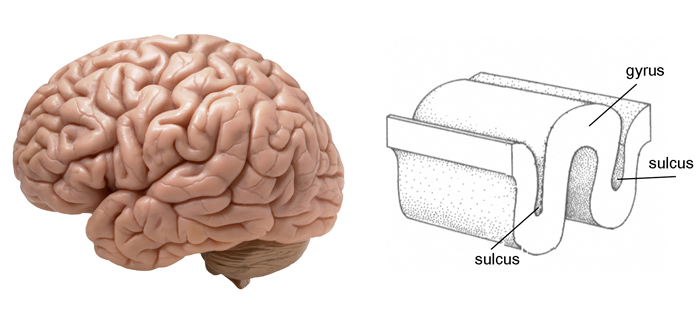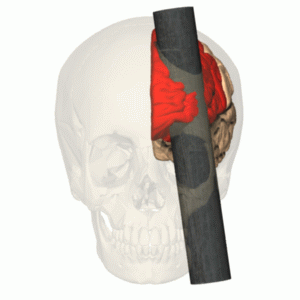Lobes of the brain
The brain’s cerebral cortex is the outermost layer that gives the brain its characteristic wrinkly appearance. The cerebral cortex is divided lengthways into two cerebral hemispheres connected by the corpus callosum. Traditionally, each of the hemispheres has been divided into four lobes: frontal, parietal, temporal and occipital.

Although we now know that most brain functions rely on many different regions across the entire brain working in conjunction, it is still true that each lobe carries out the bulk of certain functions.

Bumps and grooves of the brain
In humans, the lobes of the brain are divided by a number of bumps and grooves. These are known as gyri (bumps) and sulci (groves or fissures). The folding of the brain, and the resulting gyri and sulci, increases its surface area and enables more cerebral cortex matter to fit inside the skull.

Frontal lobe
The frontal lobe is separated from the parietal lobe by a space called the central sulcus, and from the temporal lobe by the lateral sulcus.
The frontal lobe is generally where higher executive functions including emotional regulation, planning, reasoning and problem solving occur. This is why in frontotemporal dementia, personality changes are often the first signs of the disease.
The most famous case of frontal lobe dysfunction is the story of railway worker Phineas Gage. In 1848, Gage was using a tamping iron to pack in gunpowder for blasting a tunnel through rock. While his head was slightly turned, a mistaken strike sparked an explosion that forced the rod upwards into his left eye and out through his skull.

Miraculously, Gage survived, blinded in his left eye and sustaining damage to much of his left frontal lobe. After the accident, others noticed changes in Gage’s personality: before the accident, he was known as responsible and hard-working, but afterwards, he became disrespectful, foul-mouthed and had difficulty carrying out plans. The frontal lobe also contains the primary motor cortex, the major region responsible for voluntary movement.
Posted with STEMGeeks